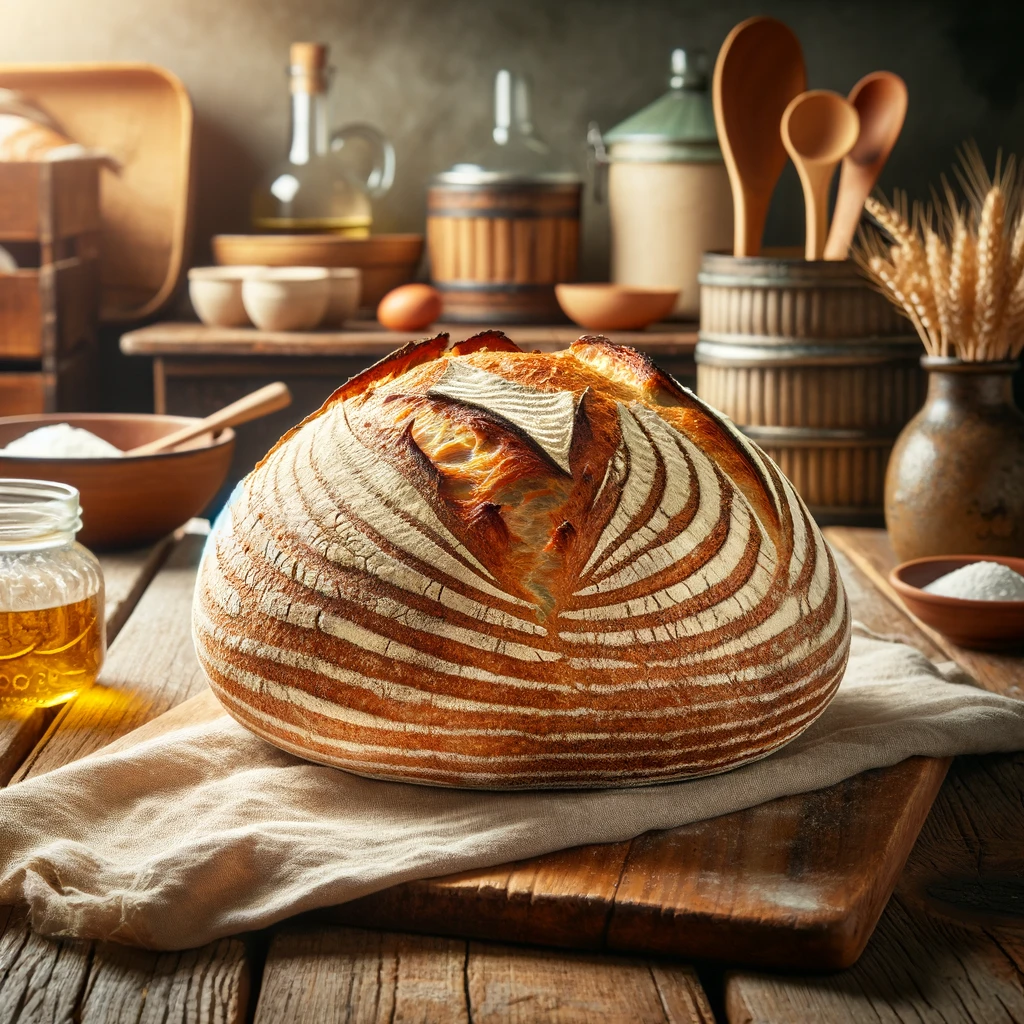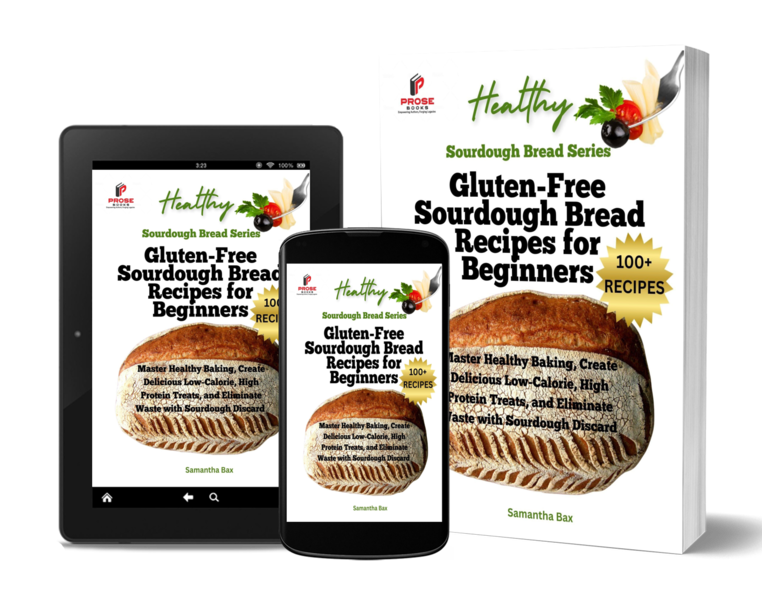Welcome to the world of gluten-free sourdough bread recipes, where dietary restrictions meet culinary delight. The art of baking sourdough bread is an age-old tradition, and now, we're bringing this tradition to the gluten-free community.
Imagine the tantalizing aroma of freshly baked sourdough bread wafting through your kitchen, the crusty exterior giving way to the soft, tangy interior. No longer does being gluten-free mean missing out on this sensory delight. Our recipes are designed with you in mind, ensuring you can enjoy the sourdough experience without any gluten worries.
Each recipe we share is a journey of flavors, textures, and baking techniques. Whether you're a seasoned baker or a beginner, we've got something for everyone. So, let's embark on this gluten-free sourdough adventure together. Stay tuned for an array of exciting recipes, baking tips, and much more. Welcome to your new favorite spot for gluten-free sourdough bread recipes.
"What Is Gluten-Free Sourdough Bread?"
Gluten-free sourdough bread is a special type of bread that is prepared without the use of gluten-containing grains such as wheat, barley, and rye. Instead, it is made using gluten-free grains such as rice, millet, or quinoa, and a live fermented culture, often referred to as a sourdough starter.
The sourdough starter is a crucial component in the making of this bread. It is a mix of water and gluten-free flour that is left to ferment over several days. The fermentation process allows for the growth of natural yeast and good bacteria, which helps the bread to rise and gives it its distinctive tangy taste.
One of the key features of gluten-free sourdough bread is its unique texture. Unlike regular gluten-free bread, which can be quite crumbly, the sourdough process helps to create a bread with a firm, chewy texture and a crispy crust.
Gluten-free sourdough bread is not only delicious but also beneficial for those with gluten intolerance or celiac disease. It is also a great option for those who simply prefer to follow a gluten-free diet.
In terms of nutrition, gluten-free sourdough bread is rich in fiber and other essential nutrients, thanks to the use of whole grain gluten-free flours. The fermentation process also aids in the breakdown of phytic acid, a substance that can inhibit the absorption of nutrients in the body.
Finally, making gluten-free sourdough bread at home can be a rewarding experience. It requires patience and care, but the result is a tasty and healthy bread that can be enjoyed by everyone, regardless of dietary restrictions.
"How To Make Gluten-Free Sourdough Bread?"
Making gluten-free sourdough bread is an art that requires careful selection of ingredients and a precise baking process. The first step is to create a gluten-free sourdough starter. This involves mixing gluten-free flour, such as rice or buckwheat, with water and allowing it to ferment over several days. It's crucial to feed the starter daily with more flour and water to keep the fermentation process active.
Next, you will need to prepare the bread dough. Combine the gluten-free sourdough starter with more gluten-free flour, salt, and water. Some bakers like to add xanthan gum to improve the texture and rise of the bread. Once your dough is mixed, it needs to rest and rise. This process can take anywhere from a few hours to overnight, depending on the temperature and humidity in your kitchen.
After the dough has risen, it's time to bake your gluten-free sourdough bread. Preheat your oven and bake the bread until it's golden brown and has a hollow sound when tapped on the bottom. Remember, every oven is different, so you may need to adjust the baking time to achieve the perfect loaf.
One of the joys of making gluten-free sourdough bread is the experimentation. You can try different types of gluten-free flour, adjust the hydration level of your dough, or add inclusions like seeds or dried fruit to create your unique sourdough bread. The possibilities are endless, and the result is a delicious, nutritious, and allergy-friendly loaf that everyone can enjoy.
"Best Ingredients For Gluten-Free Sourdough Bread?"
The key to a successful gluten-free sourdough bread lies in the careful selection of ingredients. The first essential ingredient is a gluten-free flour blend. A combination of brown rice flour, white rice flour, and potato starch often yields the best results. This blend mimics the texture and taste of traditional wheat flour, making it an ideal choice for gluten-free baking.
Next, a gluten-free sourdough starter is crucial. This can be made using the same gluten-free flour blend, water, and time to ferment. The starter gives the bread its characteristic tangy flavor and helps it rise without the need for commercial yeast.
Adding xanthan gum to the mix improves the bread's texture, making it less crumbly. This ingredient acts as a binder, replacing the role of gluten in regular bread recipes.
Another essential ingredient is psyllium husk. This natural fiber aids in moisture retention, ensuring your bread doesn't dry out during the baking process.
In terms of liquids, water is a given, but some recipes also call for milk or a dairy-free substitute to enhance the bread's richness.
Lastly, a pinch of salt is necessary to enhance the bread's flavor and control the yeast activity during fermentation.
Remember, the quality of your ingredients will significantly impact the final product. Opt for organic and fresh ingredients whenever possible to ensure the best tasting gluten-free sourdough bread.
Conclusion
In this post, we've explored what Gluten-Free Sourdough Bread is, how to make it, and the best ingredients to use. Understanding these key areas is crucial to mastering the art of baking this delicious, health-conscious bread. The importance of gluten-free sourdough bread lies in its nutritional benefits and its suitability for those with dietary restrictions. As you venture into making your own, remember, the quality of ingredients used significantly impacts the end product. Keep an eye on emerging trends in the gluten-free domain, which may introduce new, exciting ways to enhance your sourdough bread recipes.
